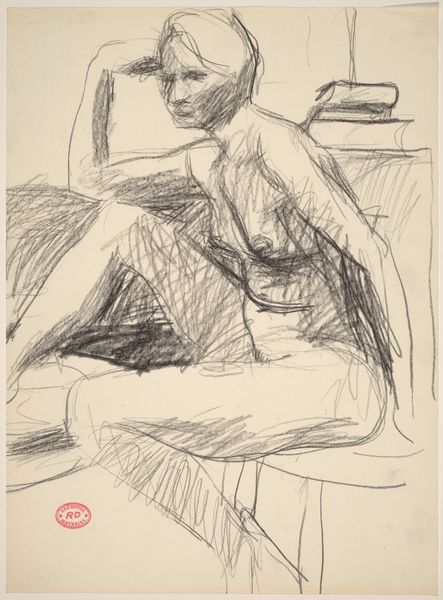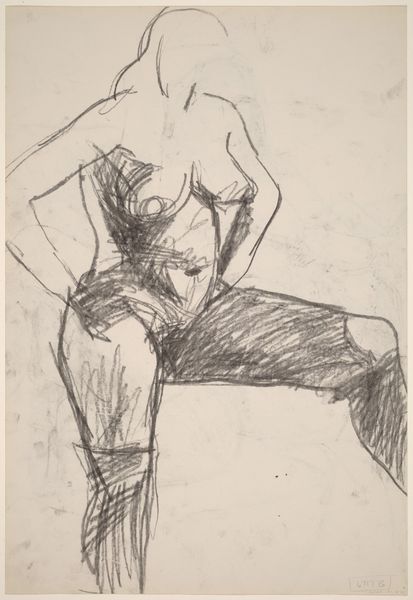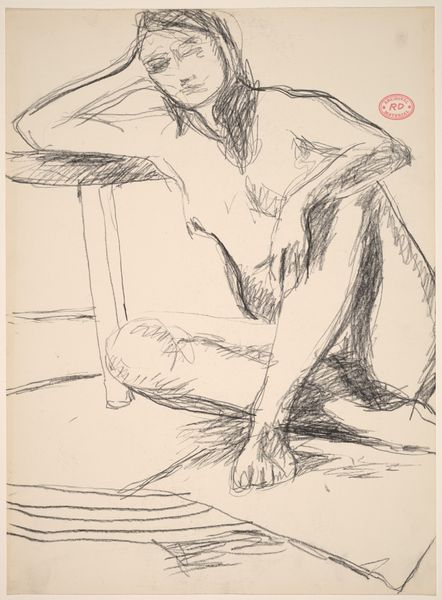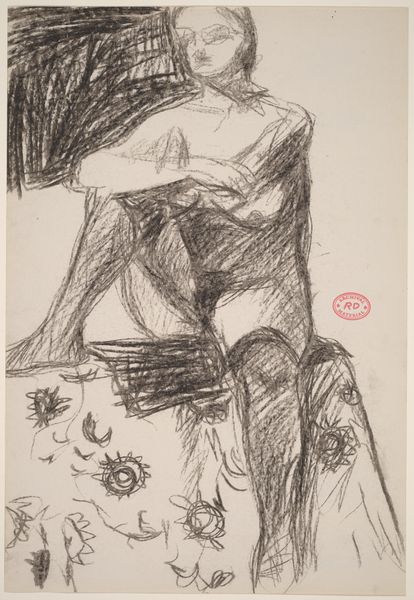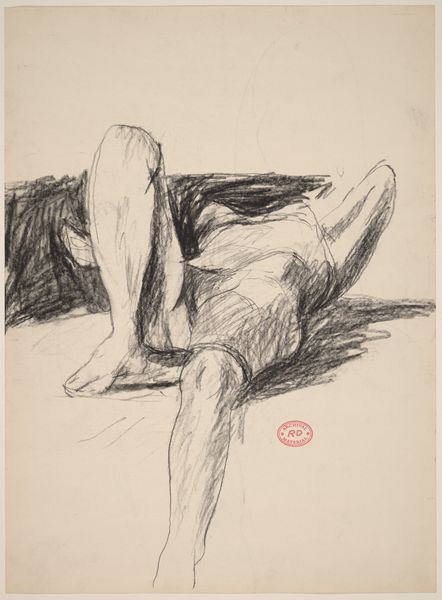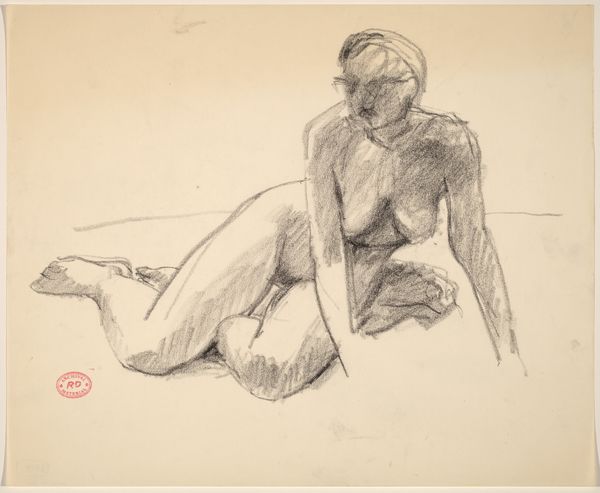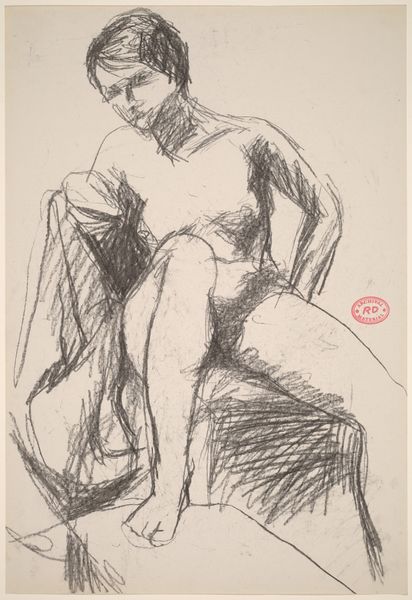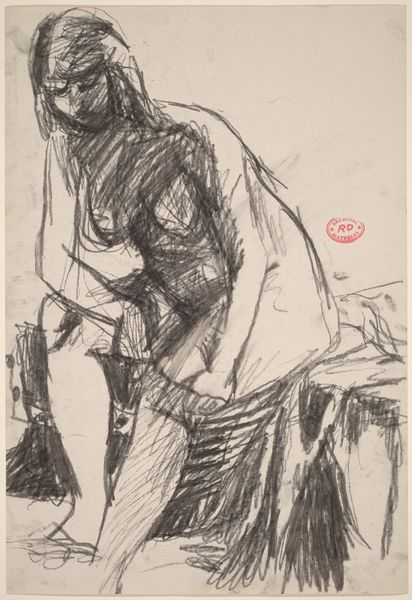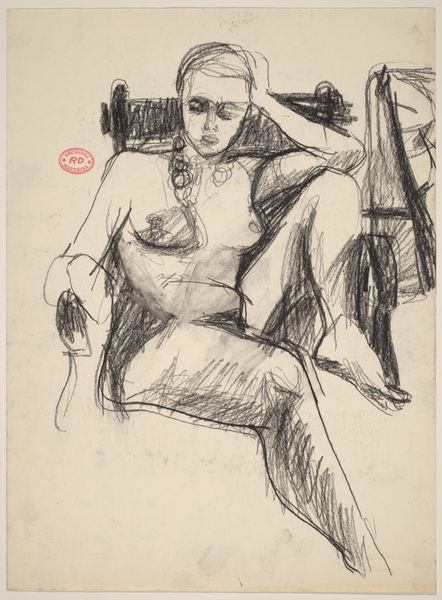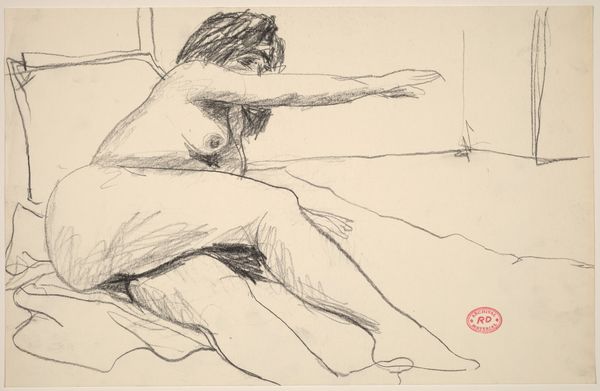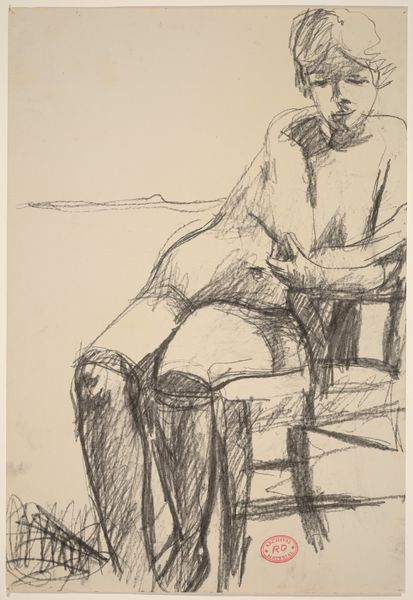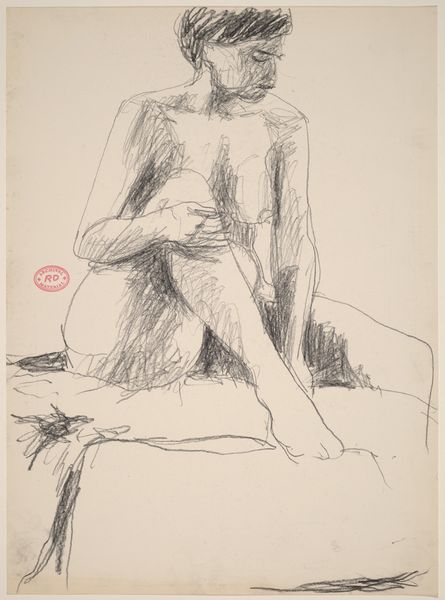![Untitled [study of seated female nude] by Richard Diebenkorn](/_next/image?url=https%3A%2F%2Fd2w8kbdekdi1gv.cloudfront.net%2FeyJidWNrZXQiOiAiYXJ0ZXJhLWltYWdlcy1idWNrZXQiLCAia2V5IjogImFydHdvcmtzL2U1YzU3YmMyLTI3YjQtNDJmMi04NDlmLWIxNmQyYWI2NTg2ZS9lNWM1N2JjMi0yN2I0LTQyZjItODQ5Zi1iMTZkMmFiNjU4NmVfZnVsbC5qcGciLCAiZWRpdHMiOiB7InJlc2l6ZSI6IHsid2lkdGgiOiAxOTIwLCAiaGVpZ2h0IjogMTkyMCwgImZpdCI6ICJpbnNpZGUifX19&w=3840&q=75)
drawing, pencil
#
portrait
#
drawing
#
figuration
#
bay-area-figurative-movement
#
pencil
#
abstraction
#
modernism
Dimensions: overall: 35.5 x 43.2 cm (14 x 17 in.)
Copyright: National Gallery of Art: CC0 1.0
Curator: This is an untitled pencil drawing by Richard Diebenkorn, a study of a seated female nude, created sometime between 1955 and 1967. It’s part of a larger body of figurative work he did alongside his abstract pieces. Editor: It’s immediately striking how the figure emerges from what looks like a jumble of lines. The overall effect is both fragile and intensely present. There is almost an interior light radiating from her. Curator: The interesting thing about these drawings from this period is that they often served as source material for Diebenkorn's paintings. This blending of representation and abstraction really speaks to the anxieties around figuration and the avant-garde at mid-century. Abstraction dominated the critical landscape, but artists like Diebenkorn persisted with the figure, albeit often fractured and deconstructed. Editor: Exactly, it almost feels like he’s teasing out the classical nude from a cloud of pure energy. Those swirling lines create a sense of potential, of form struggling to manifest. Perhaps the seated posture suggests a figure grounded in earth; perhaps she even channels some sort of timeless archetype of female energy. Curator: The use of the pencil too emphasizes that process. There’s no attempt to hide the artist’s hand, no academic polish. These quick, gestural lines remind us that the artist's gaze is shaping what we see, filtered through modern sensibilities. Diebenkorn had already come to prominence for his abstract works, so this sort of 'regression' could have been fraught with risk for his reputation at the time. Editor: I read something much different in this use of simple and quick mark-making: freedom from rigid rules, openness to interpretation. That faceless, undefined face—it’s an invitation to the viewer to project themselves, to recognize their own vulnerabilities. Perhaps that universality is the key here. Curator: I think what we both agree on, though, is the work’s powerful sense of ambiguity. Diebenkorn presents us with something that feels both intensely personal and part of a larger conversation around representation in the post-war era. Editor: It leaves me contemplating the universal human desire to be seen and known, even through layers of artistic interpretation and uncertainty.
Comments
No comments
Be the first to comment and join the conversation on the ultimate creative platform.
